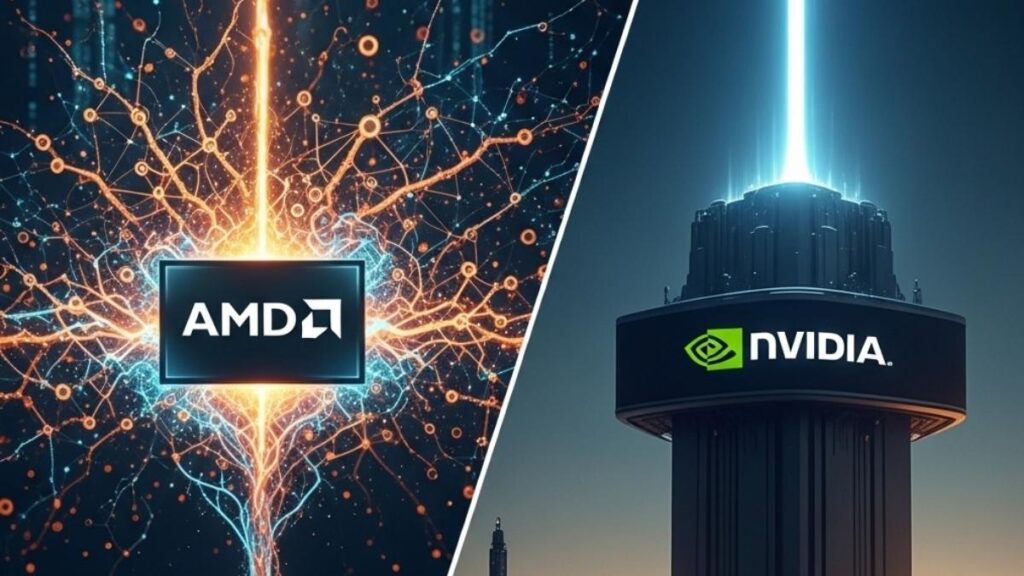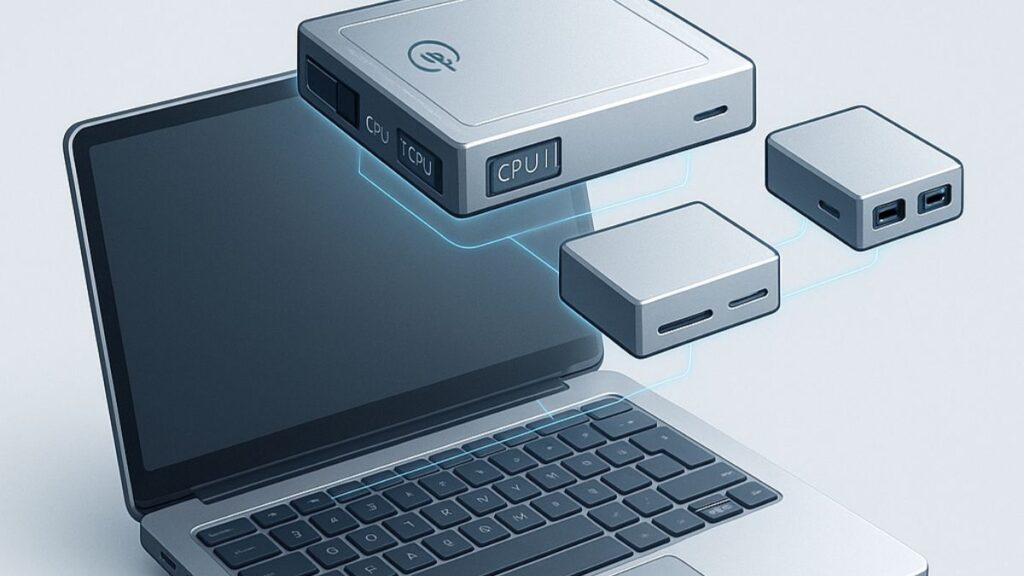Mobility continues to impact and influence IT products of every kind. That’s obvious for consumer endpoints but it’s also the case for business solutions and services. That, a few areas exist where inherent design issues have inhibited device OEMs from developing fully-compelling mobile solutions.
An area where this is especially problematic is in gaming laptops where the footprint for conventional CPU and GPU components results to systems that average 26mm (over 1”) in height, or more than twice the 11mm to 16mm that’s increasingly common in leading-edge thin, light laptops. That difference goes beyond aesthetics since it also means gaming systems are considerably heavier and less comfortably mobile than most consumer and business laptops.
That’s a problem that Intel and AMD have decided to fix together.
Collaboration and integration
What exactly are the companies doing? Short version: Intel approached AMD about developing a new platform for mobile gaming that would halve the area required for discrete CPU/GPU components on a motherboard. The goal? To enable OEMs to develop thinner, lighter, yet still fully powerful laptops with enhanced thermal dissipation. Or to use the extra space for other options, including new features/functions, board layouts and cooling technologies, or to extend battery life. AMD agreed.
How did the pair decide to go about this? By creating a discrete new product that joins Intel’s high-performance Core H-series processor (already a favorite choice in mobile gaming systems), a second gen High Bandwidth Memory (HBM2) solution and a custom-designed, discrete graphics chip from AMD’s Radeon Technologies Group together in an integrated, single processor package.
This week, Intel and AMD announced the success of their collaboration and said systems based on the new chips will be available in the first quarter of 2018.
Two new Intel technologies
The new chips also leverage two recently announced Intel technologies. The first is EMIB (Embedded Multi-Die Interconnect Bridge) which supports high-speed communications between closely-proximate silicon. In turn, that enables the assembly of heterogeneous “chiplet” components into single packages, like the new Intel/AMD solution.
The other is a power-sharing framework that coordinates the sharing of information between the CPU, GPU and memory, and also helps manage temperature, power delivery and performance state in real time. Additionally, Intel software drivers and interfaces will enable OEMs to adjust the ratio of power-sharing between the CPU and GPU to enhance the systems’ support for specific workloads and applications, such as performance gaming.
Potential future opportunities
The impact of this collaboration on upcoming gaming laptops is clear but it’s worth considering how they might impact future Intel-based solutions. For example, EMIB’s support of heterogeneous components is likely to open the door to other Intel strategic partnerships. The new power-sharing framework, on the other hand, should help Intel OEMs pursue new workload- and application-focused endpoint devices and related market opportunities.
It also seems entirely possible that the Intel and AMD’s new solutions will find their way into endpoints beyond performance gaming. One potential area for exploration would be thinner, lighter mobile workstations for designers and other graphics professionals. Another would be to reduce the sizable bulk or extend the battery life of beefy ruggedized tablets and laptops.
In both cases, Intel and AMD’s innovations could significantly enhance end users’ experiences and reshape already substantial commercial markets.
Final analysis
If you spend time observing the tech industry, you know that strategic partnerships come in all shapes and sizes. However, the best act like pebbles dropped into still water. It isn’t the size of their impact that makes a difference so much as it is how far their ripples of influence extend. Looking closely, that’s exactly the kind of impact that’s likely to result from Intel and AMD’s collaboration.
That the two companies, which are fiercely competitive in many areas, have found a way to work together peacefully and productively is intriguing. Will their joint effort succeed? That’s impossible to know until we see what OEMs make with the new offerings. But the fact that Intel and AMD successfully brought together some of their best, respective technologies in order to create something entirely new makes this partnership worthy of attention and respect.
- Dell Concept Luna – Inspiring Sustainable Innovations with Circular Design - December 21, 2023
- AI Alliance: IBM, Meta, Dell and 50+ Founding Partners Pursue Open, Transparent and Safe AI Innovation - December 13, 2023
- Dell Technologies: Creative Partnering = GenAI Innovation - November 30, 2023




Comments are closed.